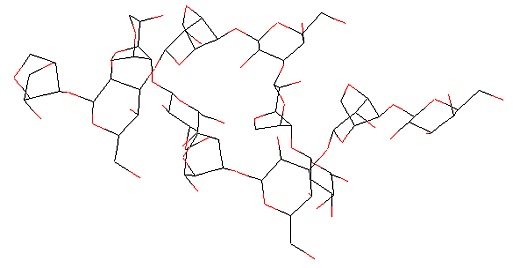
Plant cells are usually enclosed by a more or less rigid cell wall containing cellulose. Only a few algae as well as some protists and endosperm cells have no cell wall. Some algal groups contain other structural substances than cellulose. The structure of cell walls could well be compared to that of reinforced concrete: the scaffolding substance, cellulose in plants, iron in concrete is embedded in an amorphous ground substance, the matrix.
The cell wall has a number of functions: it lends the cell stability, it determines its shape, influences its development, protects the cell against pathogens (viruses, bacteria, fungi, etc.) and counterbalances the osmotic pressure. The cell wall of elongating cells is still elastic, a property that is lost in fully differentiated cells. It is therefore distinguished between a primary and a secondary wall.
The primary cell wall is laid out during the first division of the cell. It develops normally between the two daughter cells during early telophase.
The early stage of the new cell wall is the cell plate, a lamella-like structure in the former equatorial plane of the mitotic apparatus. Electron microscopic studies show that it develops by fusion of numerous vesicles. The plate grows centrifugally until it reaches the longitudinal lateral walls of the mother cell. Electron dense material is deposited at both its sides. The thus developing structure is called the phragmoplast. It is the immediate precursor of the primary wall.
The at first still elastic and flexible secondary wall develops by successive encrustation and deposition of cellulose fibrils and other components as soon as the cell has stopped growth. While the primary wall structure is the same in nearly all cell types and species, are cell type and species-specific differences typical for the secondary cell wall.
In order to understand the cell wall properties have its chemical and physical structures to be understood. Among them are:
| the structure of cellulose, | |
| the significance and structure of matrix polysaccharides, | |
| the significance and meaning of polymers of other classes of substances (like lignin and glycoproteins), | |
| a knowledge of accompanying substances: low-molecular oligosaccharides and polysaccharides, enzymes and lipids. |
In addition arise questions according to their biosynthesis and its regulation (by the phytohormone auxine, for example) as well as to the properties of substances secreted by or through the cell wall. Among the latter is the formation of appositions (cuticle, etc.), the excretion of gelatinous substances and the expression of receptor molecules that serve the species-specific cell-cell recognition and that, too, play a role in host-parasite interactions.
© Peter v. Sengbusch - b-online@botanik.uni-hamburg.de